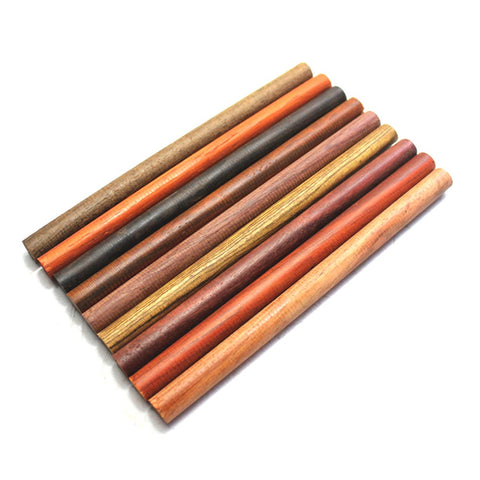How To Make a Wooden Bowl On a Lathe?
Mastering the Art of Turning a Wooden Bowl on a Lathe
Making a wooden bowl on a lathe is a satisfying process that combines creativity with craftsmanship. The lathe, with its rotating action, allows woodworkers to carve and shape a piece of wood into a smooth, symmetrical bowl, turning a rough blank into a functional and beautiful object. Whether you're a beginner or a seasoned woodworker, learning the steps involved in turning a wooden bowl can open up a world of possibilities for your woodworking projects. Here's how to make a wooden bowl on a lathe, step by step.
The first thing you'll need is a solid piece of wood, or a "bowl blank." Choosing the right wood is key to making a successful bowl. Hardwoods like maple, cherry, and walnut are great choices, though softwoods like pine can be easier to work with when starting out. Select a blank that's at least 2 to 3 inches thick and 8 to 12 inches in diameter, depending on the size of the bowl you want to make. If you're using a rough log, you'll need to cut it to size before placing it on the lathe. Before beginning, inspect the wood for defects like cracks or large knots, as these can complicate the turning process.
Once you have your bowl blank, it's time to mount it securely on the lathe. To do this, use a bowl chuck, a tool that will hold your workpiece in place as it spins. A four-jaw scroll chuck is ideal for this task because it can grip the wood from multiple angles, whether at the foot or the face of the bowl. Make sure that the chuck is properly tightened and that the wood is centered to avoid wobbling during turning. It's also important to check that your lathe is securely mounted to a stable surface to minimize vibrations while turning.
Next, begin by roughing out the shape of your bowl. You'll start by turning the blank at a slower speed to reduce the risk of catching the wood. Use a bowl gouge - the primary tool for shaping the bowl. A 3/8-inch or 1/2-inch bowl gouge is a good choice for most beginners. Hold the gouge at a low angle and use a sweeping, controlled motion to remove material from the outside of the blank. The goal at this stage is to form a rough outer shape, which might look more like a rounded disc or shallow bowl. As you remove the material, periodically stop the lathe to check the shape and symmetry of the bowl. Don't worry about getting a perfect finish yet; this is just the roughing stage.
Once the outer shape is formed, it's time to hollow out the inside of the bowl. This is where you'll spend a lot of your time. Switch to the bowl gouge and start from the center, carefully removing material as you move outward. Begin by cutting shallow passes to avoid overloading the tool, and keep the gouge's bevel engaged with the wood for smooth cuts. It's important to maintain an even depth throughout the bowl to ensure it's balanced and aesthetically pleasing. Keep checking the depth with a caliper or by simply eyeballing it to ensure uniformity. It's also important to move in the direction of the wood grain as much as possible to avoid tear-out, which can leave rough surfaces.
As the bowl begins to take shape, you'll start to notice some tool marks from the gouge. These are natural during the roughing process and can be removed later. Use a scraper tool to smooth out the interior of the bowl. The scraper is especially useful for cleaning up the surface and smoothing out any high spots or ridges left by the gouge. You'll want to keep the scraper at a flat angle to the wood to avoid gouging it. Take your time here and make multiple passes with light pressure to gradually refine the bowl's surface.
After you've shaped the inside and outside of the bowl to your satisfaction, it's time for sanding. Start with a coarse grit, like 80 or 100, to smooth out tool marks and any rough areas on the surface. Gradually work your way to finer grits, such as 150, 220, and finally 400 or higher for a smooth finish. Sand the bowl both inside and out, moving in the direction of the grain to avoid scratches. For the interior, it might be helpful to use sanding pads or sponges that conform to the bowl's curve. Be sure to sand all areas thoroughly, as any missed spots can disrupt the finish.
Once the bowl is perfectly smooth, it's time to apply a finish. The finish will not only enhance the appearance of the wood but also protect it from moisture and wear. A food-safe finish such as mineral oil, beeswax, or tung oil is ideal for bowls that will be used for eating or serving. Apply the finish with a clean cloth, rubbing it in and allowing it to soak into the wood. After applying, let the bowl dry completely, and then buff it to a shiny finish with a soft cloth. You may need to apply additional coats to ensure the wood is well protected.
With your bowl now completed, remove it from the lathe and inspect your work. You should have a smooth, well-shaped, and functional wooden bowl that showcases the natural beauty of the wood. The process of turning a wooden bowl can take time and practice to perfect, but with the right tools, patience, and techniques, you'll be able to create stunning pieces that can be used and admired for years to come. The satisfaction of transforming a raw block of wood into a finely crafted bowl is one of the many joys of woodworking, and it's an accomplishment that any woodworker can be proud of.

